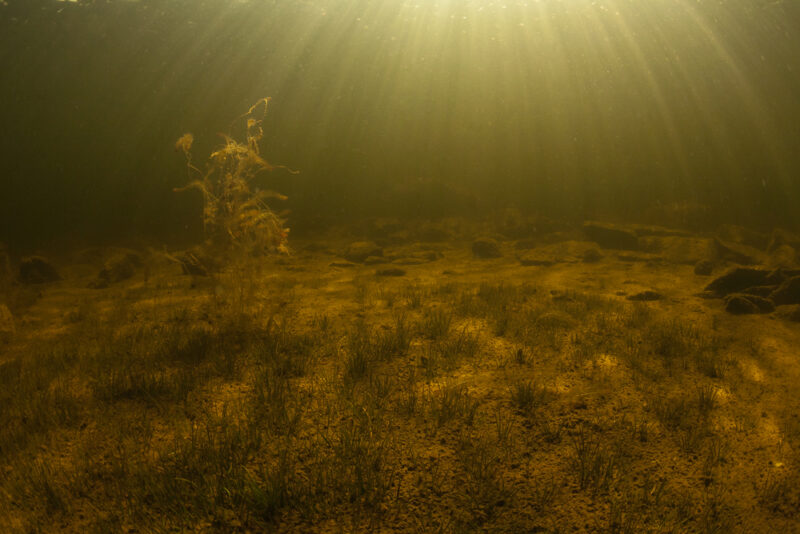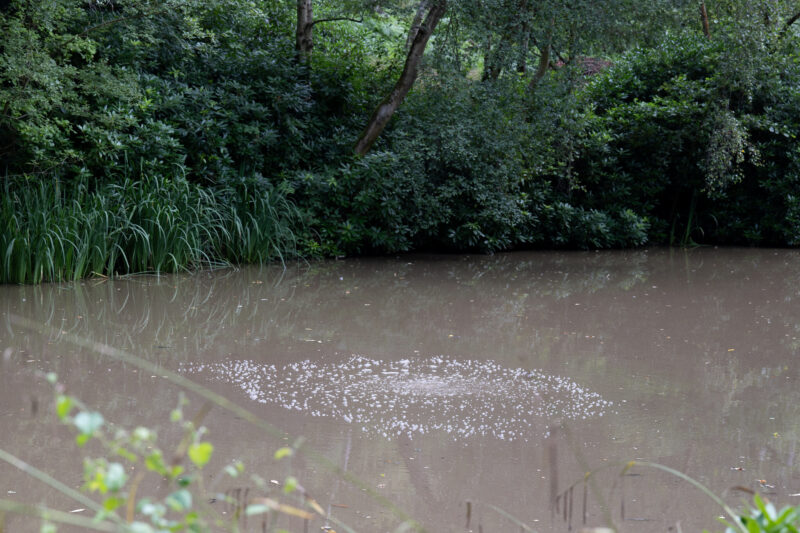Is silt in water hazardous?
How to remove sediment in ponds and lakes and stop worrying about silt!
We’ve all witnessed the cycle. Over time, what was clean water in lakes and ponds turns into cloudy water as sediment and other materials pile up, and the whole ecosystem starts to suffer.
The water surface becomes dirty with algae and silt, the water becomes stagnant and starts to smell and you start wondering if that’s caused by a build-up of bacteria or other unwanted chemicals and is this water going to be a risk for people and aquatic life?
It’s a subject we discussed in a recent article looking at how silt can affect the lifespan of a lake and this article struck such a chord within the turfcare community we thought we’d investigate further.
In this article, you’ll learn how to assess your pond’s health and easily remove silt when needed.

The usual suspect
In most cases, silt is the root cause of the unpleasant changes described above. But what is it exactly? And where does it come from?
Silt is a granular material with particles larger than clay and finer than sand, ranging between 4 to 63 microns. It comes primarily from erosion, when mineral fragments carried by flowing water scrape against stream beds and chip away particles of rock. However, silt can also be formed through the decay of plant leaves and similar organic material that sediment in water.

Is silt in water harmful?
Silt is not directly dangerous for humans, but its effects on the ecosystem shouldn’t be underestimated.
The influx of sediment into a pond and accumulation of excess sediments can lead to an increase in nutrient load, loss of total volume, and a myriad of other problems that can be costly to remedy if left unchecked. The best solution? Proactively planning maintenance, regularly inspecting both structural and biological components of your pond, and acting on issues promptly.
One of the main issues with this sediment is the way it can interfere with the flow of water from inlets and outlets, creating a nasty stagnation problem. This phenomenon drastically decreases the oxygen levels of the pond and favours the growth of anaerobic bacteria that accelerate the decay of organic materials in the water. That bad smell? It could be the waste gas produced in this process.
Needless to say, the plummeting oxygen levels are not good news for fish either. In addition, silt threatens aquatic life because it can increase the acidity of water and make it very shallow if the build-up happens quickly. This can be a problem of its own when shallow ponds combine with heavy rain, raising concerns about flooding.
Last but not least, when silt interrupts the flow of outlets discharging water, the ensuing stagnation creates the perfect environment for the proliferation of algae. This is another important issue for the pond’s ecosystem as algal mats can hinder the mixing of oxygen and water.

Dealing with water pollution and silty water
There are a few strategies you can easily implement to mitigate your silt problems. First of all, you should place barriers and silt traps in your inflow streams to reduce the accumulation of mineral sediment coming from outside sources.
Another great tip is to manage the erosion happening along the banks of your pond or lake by adding plants that will stabilise and protect the soil. You can also periodically remove excess algae and duckweed from the water to minimise the amounts of silt coming from decaying plants.
This is great, you might think, but isn’t there a solution that addresses this issue once and for all? It’s time to consider the benefits of dredging and aeration.

Can a drainage system and dredging control silt in water?
When discussing common methods for dealing with silt, dredging is often mentioned as the best way to remove silt once a build-up has already occurred. This might be true, but it should be seen only as a last-resort solution.
Although effective, the issue with dredging is that it can be costly, time-consuming and very harsh on the pond’s ecosystem. Indeed, using diggers to excavate and collect silt can cause significant damage to the environment.
While the process will help you remove high levels of sediment, it could also spread toxins from the disturbed soil such as heavy metals, arsenic and other chemicals.
On the other hand, a reliable aeration solution allows you to manage the levels of silt and improve the overall health of your pond. This way, you won’t have to resort to dredging.

How to get rid of silty water in a simple, eco-friendly way
Aeration can do wonders for ponds and small lakes by transferring more oxygen back into the water. This phenomenon reverts the negative effects caused by low levels of oxygen, such as the proliferation of anaerobic bacteria and algae that endanger aquatic life.
Oxygen-rich waters can also favour the shift from anaerobic to aerobic bacteria, which inhibit algal bloom, are mostly odourless and facilitate the process of breaking down organic sediment at the bottom of ponds.
By combining this approach with the silt-management tips we explored above, you should be able to keep unwanted sediment at bay for the foreseeable future without resorting to costly dredging solutions.
The best solution for treating water and managing silt
We believe the best way to achieve any goal is to use the best tools available. In the context of aeration, that means leveraging Otterbine’s solutions.
From beautiful aerating fountains (ideal for shallow ponds) to powerful aerators for depths of 2.4m or greater, Otterbine provides best-in-class solutions whose reliability and performance has been consistently confirmed by third-party tests.
The verdict? Otterbine systems deliver the highest oxygen transfer and pumping rates in the industry.
This makes Otterbine perfect for treating water above and below the surface – eliminating the need for invasive dredging initiatives, simplifying the management of silt levels and significantly improving the health of your pond.